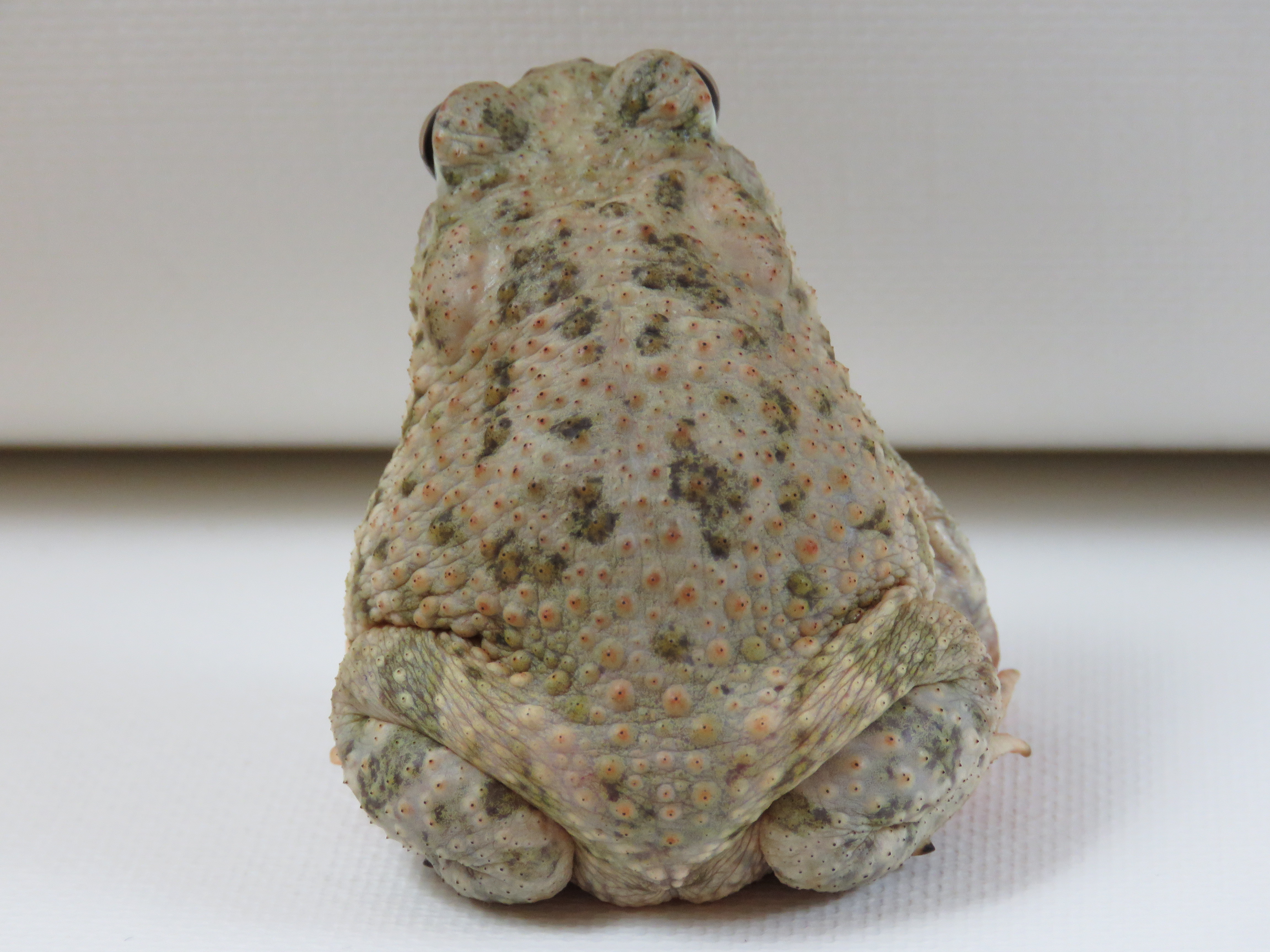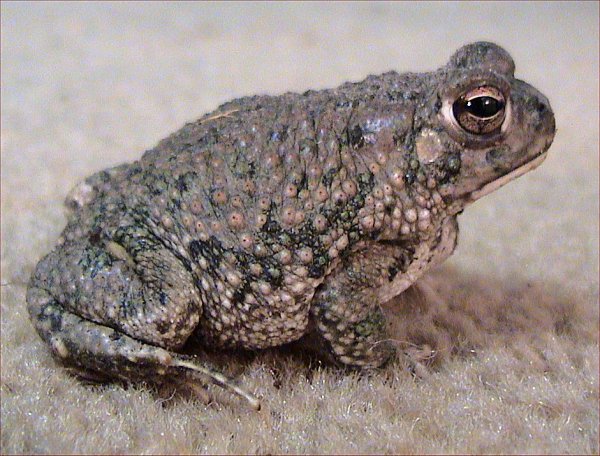Anaxyrus speciosus: An Intimate Portrait of the Texas Toad#
In the quiet twilight of Central Texas, as the sun dips gently beneath the oak-covered hills, the night slowly awakens to life. Amidst a symphony of insects and the fluttering wings of moths drawn to moonlight, there emerges another voice: a gentle trill, melodious yet persistent, a distinct chorus that announces the presence of a modest amphibian—the Texas Toad, scientifically named Anaxyrus speciosus.
Though small and subtly colored, Anaxyrus speciosus has a remarkable story that weaves together biology, ecology, and conservation, underscoring its quiet yet profound significance in the natural tapestry of Texas.
Taxonomy and Classification#
The Texas Toad belongs to the diverse Bufonidae family, widely recognized across the globe as common toads. Within this wide-ranging family, the genus Anaxyrus is primarily North American, distinguishable by their relatively stocky bodies, prominent parotoid glands behind their eyes, and often wart-covered skin. Until recently, species under Anaxyrus were grouped under the genus Bufo. Modern taxonomy, guided heavily by genetic analysis, reclassified North American toads separately, highlighting their evolutionary distinctiveness.
Anaxyrus speciosus itself was first described by Girard in 1854, earning its species epithet “speciosus,” meaning “showy” or “handsome.” While perhaps not flamboyant in the traditional sense, this charming amphibian captivates those fortunate enough to encounter it through its understated beauty and fascinating biological adaptations.
Natural Habitat#
Deep within the heart of Texas, from the rolling prairies of the Edwards Plateau to the rich plains near the Llano Estacado, the Texas Toad finds sanctuary. Unlike many tropical amphibian species that depend on lush rainforests or cloud-covered peaks, Anaxyrus speciosus thrives in drier, more temperate landscapes, demonstrating nature’s extraordinary adaptability.
Its preferred habitats include sandy soils, mesquite woodlands, open grassy fields, cultivated agricultural land, and even suburban backyards. The Texas Toad relies heavily on temporary bodies of water formed after seasonal rains—small ponds, ditches, roadside puddles, or gentle riparian streams become brief, vital sanctuaries essential for their breeding rituals. These ephemeral pools create critical nursery grounds for their tadpoles, who mature rapidly before summer heat claims their watery nurseries.
During the hot, dry periods common in their range, Texas Toads retreat underground, burrowing into loose soils to escape dehydration and extreme temperatures. This behavior not only sustains the species but demonstrates remarkable resilience against Texas’ often harsh climate extremes.
Physical Characteristics#
Anaxyrus speciosus sports a compact, robust build with adults typically ranging between 2 to 3 inches in length. While modestly sized, their stout bodies are ideally suited for life both underground and on land. A closer look reveals a rich mosaic of textures—rough, wart-like skin, subtly patterned in hues of browns, olives, grays, and even reddish-browns—allowing the toad to blend seamlessly into leaf litter, loose sand, and dried grasses.
Their characteristic parotoid glands, prominent oval-shaped structures behind their eyes, contain a mild toxin proven effective at deterring would-be predators—from curious mammals to careless birds. Though these toxins pose minimal threat to humans, predators quickly learn to avoid the unappealing taste and irritation, providing the Texas Toad invaluable protection on the dusty, open ground.
Their eyes, golden or bronze-hued under moonlight, possess a reflective quality, adapted wonderfully to nocturnal life. Long, powerful hind legs give them agility in leaping towards prey or safety, while their robust forelimbs excel at rapid digging and defensive burrowing.
Behavior and Life Cycle#
As evening settles and dusk envelopes their habitat, the Texas Toad stirs from its daytime hideaway beneath leaf litter or below the soil surface. Eagerly, cautiously, it ventures forth, guided by an insatiable appetite and the instinctual drive to reproduce.
Nocturnal Hunters Beneath the Stars#
With patient stillness punctuated by flashes of sudden agility, the Texas Toad hunts through the dark landscape, feeding predominantly on insects and small arthropods like beetles, ants, spiders, moths, and crickets. Possessing remarkable vision adapted to low-light hunting, and an acute sensitivity to vibrations through the soil, they swiftly capture prey, striking quickly with a sticky, darting tongue.
Seasonal Breeding Rituals#
Following seasonal rains—usually from March to September—the landscape transforms, awakening dormant instincts: breeding season. Males congregate around temporary water sources, expertly selecting places most likely to sustain tadpoles until metamorphosis. Their gentle yet persistent trills float serenely across the Texan night, each male competing audibly yet harmoniously for female attention.
After selecting a suitable mate, females release thousands of tiny, gelatinous eggs into shallow water, where males fertilize them externally. Within mere days, tiny tadpoles emerge, beginning their rapid transformation. Accelerated growth is key—their home is temporary, and survival depends on successfully metamorphosing into toadlets before temperatures rise and waters evaporate.
Ecological Role#
Though modest in size and uniquely adapted for drier habitats, the Texas Toad fills an essential ecological niche. Predatory by night, they continuously act as natural pest controllers, keeping insect populations in check. Their dietary preferences notably include numerous agricultural pests, inadvertently supporting farmers and gardeners across a broad region of Texas.
Simultaneously, as abundant and accessible prey to myriad predator species—snakes, birds, mammals—the Texas Toad forms essential connective tissue within their ecosystem, sustaining a balanced food web. Being highly sensitive to environmental disturbances such as pollution, drought, or habitat degradation also positions them as potential bio-indicators, signaling environmental health or distress.
Threats and Conservation Status#
Currently listed as Least Concern by the International Union for Conservation of Nature (IUCN), the Texas Toad maintains a stable population across a relatively extensive range. However, complacency is dangerous—the subtlety and unpredictability of contemporary ecological challenges demand vigilance. Habitat degradation through agriculture expansion, unregulated urban sprawl, and widespread pesticide use directly threaten local populations.
Climate change is another emerging threat, impacting delicate seasonal water availability crucial for breeding. Droughts that become longer or more severe risk isolating or eliminating breeding sites, striking at the heart of their survival and reproduction cycle.
Conservationists, land managers, and communities across Central Texas increasingly recognize the need for responsible land stewardship and water use policies—protecting natural areas, maintaining wetlands and ephemeral pools, and minimizing chemical use—to safeguard not only the Texas Toad but the broader ecological health.
Cultural and Scientific Significance#
While not overtly iconic compared to more extravagantly colored amphibians, Anaxyrus speciosus occupies a special place as a beloved symbol of resilience, adaptation, and quiet beauty within Texas wildlife lore. In local folklore and nature education, the Texas Toad represents adaptation and perseverance, symbolic traits valued deeply within Texan culture.
Scientifically, researchers study the species’ physiological adaptations to drought and heat stress—seeking insights potentially applicable to understanding broader amphibian resilience amid climate change global trends. Each subtle discovery deepens appreciation and elevates the humble Texas Toad’s scientific prominence.
Conclusion#
The Texas Toad’s gentle voice might easily be overlooked amidst flashier creatures, yet it whispers a profound story: resilience, adaptation, and ecological interconnectedness. Its survival and ecological stability remind us delicately yet persistently of our responsibilities as stewards of nature.
Let this calm, nocturnal song—its soft trill echoing beneath the Texan night skies—invite you to explore further, to learn, appreciate, and champion local wildlife conservation. Indeed, the humble Texas Toad’s thriving assures healthier landscapes, preserved ecosystems, and maintained biodiversity for generations yet unborn.















